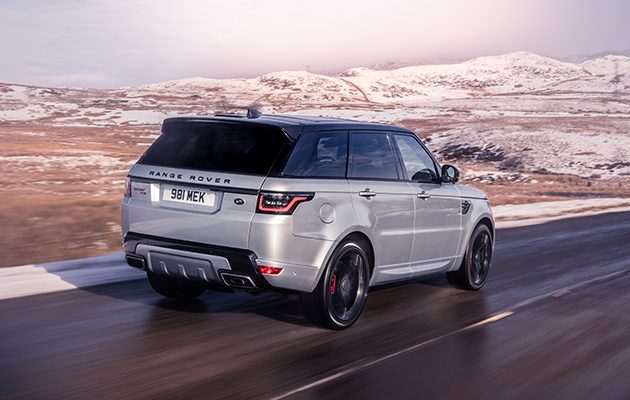The straight-six petrol certainly attracted attention, but was there bite behind the bark? Enough, perhaps, to tow the fuel bowser? Charlie Flindt's flatcoats certainly thought so…
With flash styling, shiny black wheels and suede-covered interior, the farmyard doesn’t seem the natural home of the Range Rover Sport HST. Yet a week in the country and it fitted in rather well, says Charlie Flindt – even garnering the flatcoats’ approval.
For more on Range Rover, read about the Range Rover Velar – a medium-sized SUV which proves to be a fantastic package.
The Field is the best, and original, sporting journal – covering everything that matters to proper, rural types. SUBSCRIBE today and get your first six issues for JUST £6 by clicking on THIS link.
RANGE ROVER SPORT HST
The farm dogs were the first to hear the Range Rover Sport. They grumbled, then barked, then went and hid under the table. The roar reached human ears and finally the sash windows in their less-than-snug frames started to rattle, and a huge gloss-black-and-white beast drove into the yard. Yup, the Range Rover Urban Wing had decided to spend a week in the country.
It’s not just the noise from the new straight-six petrol that’s loud: the Sport looked slightly ill at ease amongst the dust-covered harvest vehicles and tractors, with its flash styling, red callipers and shiny black wheels. I joked with the driver about how we wouldn’t be able to use it to tow the fuel bowser out to the combine. “No problem!” he said, played with the screen and a hidden towbar emerged. Suddenly, it looked a bit truer to its rural roots.

Suede gets everywhere – even the dashboard.
The inside is slightly less flashy, with more suede than a geography teacher’s shoe rack. It’s all over the dashboard, the gear stick, the steering wheel and the seats. The controls are a curious and confusing mix of touchscreen and rotary dials.
As our week with it went on, the Sport settled in quite nicely. The dogs liked the one-piece tailgate (I did the knock-knuckle test: plastic?), the boot managed to hold a great variety of tools and grease (once we’d respectfully put down an old towel to protect the plush carpets), although the long hot spell meant that opportunities for off-roading were very limited.
Bizarrely, the most miles I did were on a long trip along the south coast; a neighbour needed some uncut corn to try out a ‘demo’ monster combine (he’d finished all his harvest), I needed a day away and had to run an urgent errand far, far along the A27 – the perfect mix of high-speed dual carriageway and chaotic traffic crawl to test the Range Rover.

It has a mini-hybrid system.
The results were mixed, too. In the cut-and-thrust of Worthing’s roundabouts, the Sport seemed a bit lurchy, occasionally slow off the mark, as if the 400hp couldn’t quite persuade the 2,400kg to get on – and blind spots behind the huge headrests and door mirrors didn’t make life any easier. Braking, too, seemed to have a couple of settings, which is probably due to the mini-hybrid system that Land Rover has installed in an attempt to get better CO2 emission status. (It does the square root of not a lot for fuel consumption, however.)
On the occasional stretches of smooth dual carriageway, the Sport was a dream, swift and almost silent, providing the perfect opportunity to enjoy the sleeping chalk giants of the South Downs in proper, if slightly suede-heavy, comfort.
Back home, the dogs didn’t hide as I drove in. They were out of the back door and into the open boot as soon as they could manage it, demanding, as only flatcoats do, to know where the next trip out was. And if flatcoats like something, you know it’s a good thing. Mind you, after all that, I never did get to take the Range Rover Sport out to fuel up the combine.
Range Rover Sport HST
♦ Engine: 3.0 litre straight-six petrol
♦ Power: 400bhp
♦ Max speed: 140mph
♦ Performance, 0 to 60: 5.6 seconds
♦ Combined fuel economy: (WLTP low) 27.4mpg
♦ Insurance group: 50E
♦ Price: £81,250





